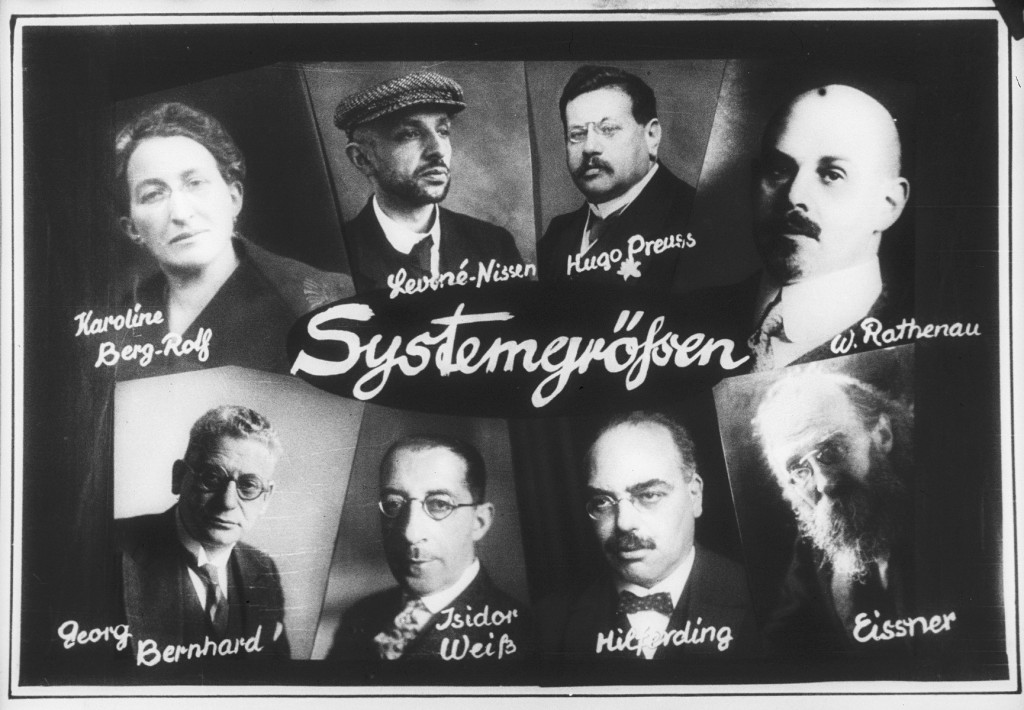Walther Rathenau
In 1933, Nazi students at more than 30 German universities pillaged libraries in search of books they considered to be "un-German." Among the literary and political writings they threw into the flames were the works of Walther Rathenau.
Excerpt
...it is that we Germans have, properly speaking, no understanding of political tendencies. We are more or less educated in business, in science, in thought, but in politics we are about on the same level as the east Slavonic peasantry....such processes of thought as 'the police are to blame, the war conditions are to blame, the Prussians are to blame, the Jews are to blame, the English are to blame, the priests are to blame, the capitalists are to blame'--all these we quite understand.
—Die neue Gesellschaft (The New Society), Walther Rathenau, 1921
Which of Walther Rathenau's Works were Burned?
All works
Who was Walther Rathenau?

When students burned the books of Walter Rathenau (1867-1922) in 1933, they evoked the vicious antisemitism that had inspired his assassination 11 years earlier. Rathenau had been educated as an engineer and became experienced as executive officer of his family's electrical company. During the last half of World War I, he directed the Raw Materials Department in the German Ministry of War.
Rathenau represented the new German republic at a variety of diplomatic and treaty negotiations. He was in the German delegation at Versailles in 1919 and he negotiated the Rapallo Treaty with the Soviet Union in 1922. He also became foreign minister of Germany in 1922, the first Jew to hold a cabinet post in Germany. Rathenau won some reparations concessions from the victors of World War I and generally improved relationships between Germany and her former enemies.
Though a strong German patriot, he remained a liberal democrat and advocated socially minded correctives to some of the ills of the capitalist economy. As a Jew and a committed if conservative advocate of the Weimar Republic, Rathenau's very person was a lightning-rod for the hatred of those on the conservative and radical right who despised the Republic and hated Jews. Among the hateful ditties written about him was the following: "Erschlag den Walter Rathenau/ die gottverdammte Judensau" (Slay that Walter Rathenau/ the goddamned Jewish sow).
Less than six months after becoming foreign minister, Rathenau was slain by gunmen from a right-wing paramilitary group.
Critical Thinking Questions
- How did the German public react to the book burnings? What were some of the reactions outside of Germany?
- Why do oppressive regimes promote or support censorship and book burning? How might this be a warning sign of mass atrocity?

